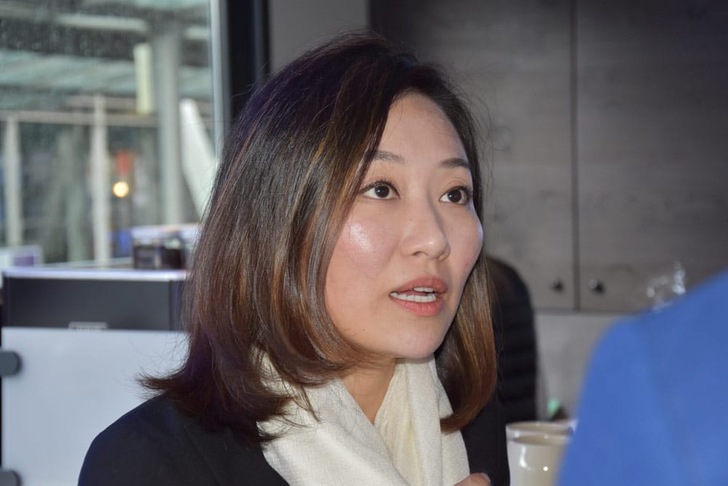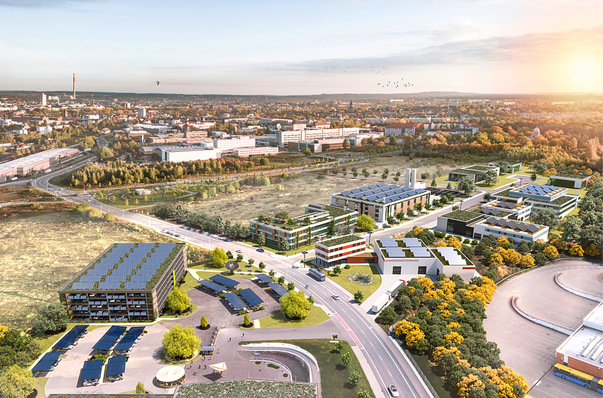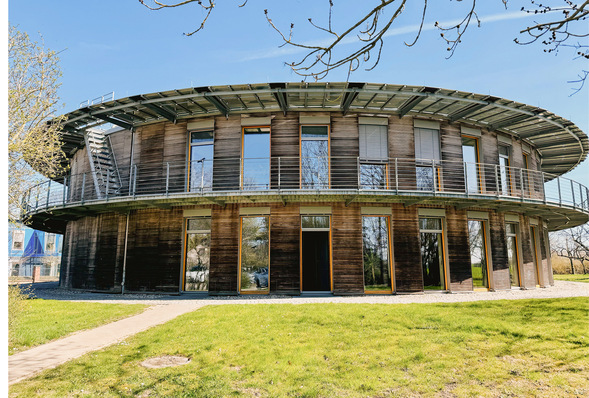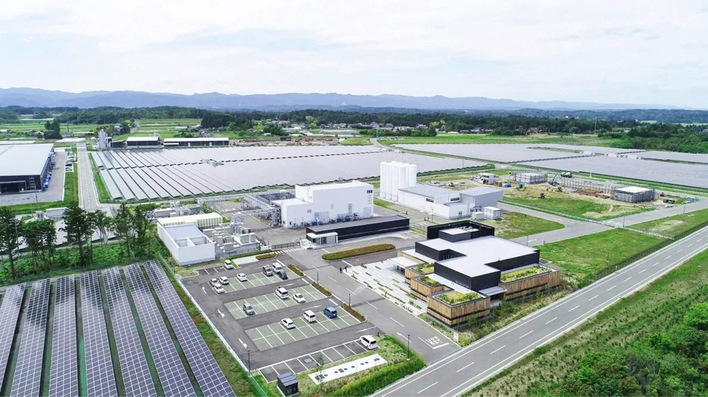Those who weren’t familiar with Refire before can now think of the fuel cell company every time they hear the name Clean Logistics, because the startup from Niedersachsen has a supply contract for fuel cell systems from the company. So it’s not surprising that Audrey Ma, Refire Group Vice President International Markets, had been invited to be a guest of honor at the presentation ceremony for Clean Logistics’ truck Fyuriant truck launch this past summer in Stade (see H2-international Oct. 2022). H2-international had the opportunity to speak with Ms. Ma during IAA Transportation 2022 in Hannover.
H2-international: Ms. Ma, how long has Refire been around and how long have you been with the company?
Ma: Yesterday was actually the seven-year anniversary of the Refire Group. It started out as a very small team. The founders were three engineers who worked in the area of fuel cell technology. I joined the company at the beginning of 2017 and within these few years, we’ve grown to a team of nearly 700.
What was your goal at the time?
Our common goal was to further develop fuel cell technology for commercialization, which is now all around us at this trade fair. I believe we’ve contributed to making fuel cell technology market ready.
Could you give us examples of how?
In 2017, we put our first FC vehicle fleet – 500 7.5-tonne fuel cell delivery trucks – on the road in Shanghai. We engineered and manufactured the fuel cell systems and worked on further development of the vehicle prototype, including FC system integration. Our partner at the time, Dongfeng, which is a major Chinese OEM, then built the 500 trucks. This was a really challenging undertaking, and we learned a lot from it – from hydrogen production to the question of who would do vehicle maintenance work. We managed to find operators that would use these vehicles and market them to end-user companies. When we mobilized drivers, we were also the ones who then organized the after-sales service of those vehicles, not the OEMs or the operators. After that, we redoubled our efforts and, among other things, we installed an H2 station of our own with partners so that our drivers would have a place to refuel.
In other words, a completely new approach to bringing such technology into the hands of customers.
Yes, we had to take a different path. We had to find ways to make it viable because a traditional approach wouldn’t have worked here.
Why are you here today?
We brought a fuel cell system with us today that came straight off the production line. This is not a prototype. We will have covered over a million kilometers with this system by the end of the year. It has a power output of 117 kW and has already been integrated into several hundred heavy-duty vehicles. We are working together with a variety of partner companies – domestically and internationally, including in Germany, to integrate these systems into vehicle powertrains.
So you’re a classic system integrator.
Yes, we integrate fuel cell technology in various applications. The Refire Group has three subsidiaries that develop FC technologies and manufacture products. One of the business units, Unilia, produces FC stacks. Another, Pando, makes FC power electronics products, and Refire Technology builds complete FC systems. These three subsidiaries operate independently but under a common umbrella.
So you produce your own fuel cell stack but also use stacks from other producers for your systems, like Ballard for example?
That is correct. In the production of complete FC systems, our own stacks or those from other manufacturers may be used. For example, in one project Toyota is our stack partner. Similarly, there are also German, Canadian and Chinese stack suppliers that we have worked with.
I see. What applications do you address with Refire Technology?
We focus on a variety of applications for commercial vehicles and stationary power. We don’t just supply the fuel cell systems and core components, but also offer application engineering services. Sometimes we’ll also do turnkey solutions in order to help customers decarbonize specific and unique end use case applications.
Is that what you do for Clean Logistics?
Clean Logistics has a very capable engineering team which already has experience from past work in the conversion of diesel powertrains to battery-electric, and they’re now adding fuel cell solutions to their product lineup. The complete engineering solution that we typically provide OEMs is to integrate a fuel cell powertrain based on their own existing chassis. We look at which fuel cell system is optimal for a given application, and then we assemble the various vehicle components in order to return a fully finished fuel cell vehicle prototype to the OEM.
How many systems have you already delivered?
We have shipped in total about 4,500 fuel cell systems for commercial vehicle integration. Vehicles powered by Refire FC systems have now converted at least 3,500 tonnes of hydrogen into electricity for zero curbside emission driving. Altogether, the fuel cell commercial vehicle fleets have clocked more than 125 million kilometers, a mileage that rises about 1 million kilometers every week. As I mentioned earlier, our aim has always been to commercialize fuel cell technology, and so bringing products to market and into the hands of actual drivers is very important. We work collaboratively to enable OEMs to homologate their prototypes so that at-scale vehicle production can be achieved when fleet operators place their orders.
You’re based in Shanghai, and are also active in Germany and North America. Where is your global focus?
That’s right – Refire’s corporate headquarters is in Shanghai. We currently have two engineering centers – one in Shanghai, and another in Vancouver. A third engineering center is in the works in Germany which will service our European customers.
Okay. Could that also become a European production site?
This is very much a possibility. I think it makes a lot of sense to be strongly rooted right here, where we offer our products and services. However, such a commitment must be made at the right time. Our current production capacity of 5,000 systems annually is sufficient for global demand at the moment. The question and timing of setting up production facilities here will very much depend on the political framework as well as order volumes. The European market for FC commercial vehicles does seem to be on the cusp of a breakout, but we need to wait a bit and see. In the medium and long term, however, we do expect Germany to be an important hub for us within the larger continent because Europe is really starting to accelerate.
When you look here at Europe, where do you see the best framework conditions?
I think for fuel cell technology, if a company wants to enter the EU market, Germany is set to play a key role. We were fortunate to be able to establish solid supply chain partnerships here back in 2016. Then by 2018 we had already found our first end user customers, and in the same year we gained some visibility at the IAA Expo. This year, we have further intensified these co-operations, thereby helping to enable rapid growth our local partners in the FC sector. From hydrogen production to deployment of fuel cell technology we must work together to build a functioning and self-sustaining market.
Fig. 2: “there’s been much dialogue, and more and more companies are getting involved.”
DSC_0403.jpg
Are you mostly looking to connect with larger corporations, or do you also consider working with small businesses?
It’s interesting to see that the smaller, more agile companies are so willing to take the plunge. They want to see change, and despite the uncertainties and challenges, they are quite daring. As I mentioned, Refire also started out very small with just three automotive engineers as founders. We do work with larger industry players, for example, there’s a 3.5-tonne prototype FC transport van on show here at IAA Hall 12 that Schaeffler and Refire completed together. We also gave an introductory presentation here about a collaboration we have with Garrett. And Continental has been another such partner for our products. On the vehicle side, we’ve worked with Mitsubishi Fuso, a subsidiary of Daimler Truck, on their first FC truck. Regardless of the size of company, we know that we have to deliver good work with like-minded partners and that we can only succeed together.
How does market volatility affect Refire?
Like all market participants, we have to be fully cognizant of the changing landscape. We try to maintain flexible boundary conditions where we can, and prefer to focus on areas where we can make a positive impact – the confluence of policy, market, and technology. At the risk of repetition, we believe that means prioritizing co-operation. It also means helping to enable hydrogen ecosystem and market growth through knowledge sharing and facilitation of other relationships amongst active as well as potential stakeholders. Ultimately, if we can contribute sustainable value to our customers and partners, we expect to be able to thrive.
And finally, when do you expect a ramp-up to a considerable number of units?
Refire fuel cell systems currently power some 3,500 commercial vehicles on the road. When we talk about ramp-up, we can’t ignore the China market. So far, the country has plans to deploy 50,000 vehicles by 2025, which, in our opinion, is an achievable number. Parallel to this, other fleets are being built up around the world. Towards the second half of the decade, we expect to see quite a few more OEM projects and products hitting the roads in Europe, North America and Asia.
Thank you very much for your time and your responses.
Interviewer: Sven Geitmann






